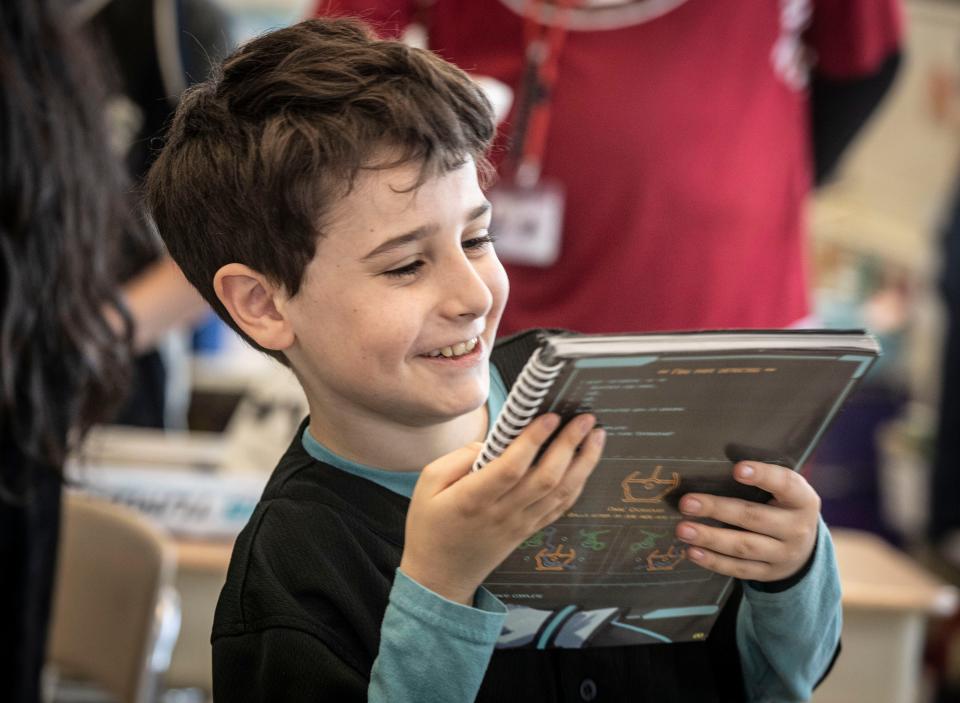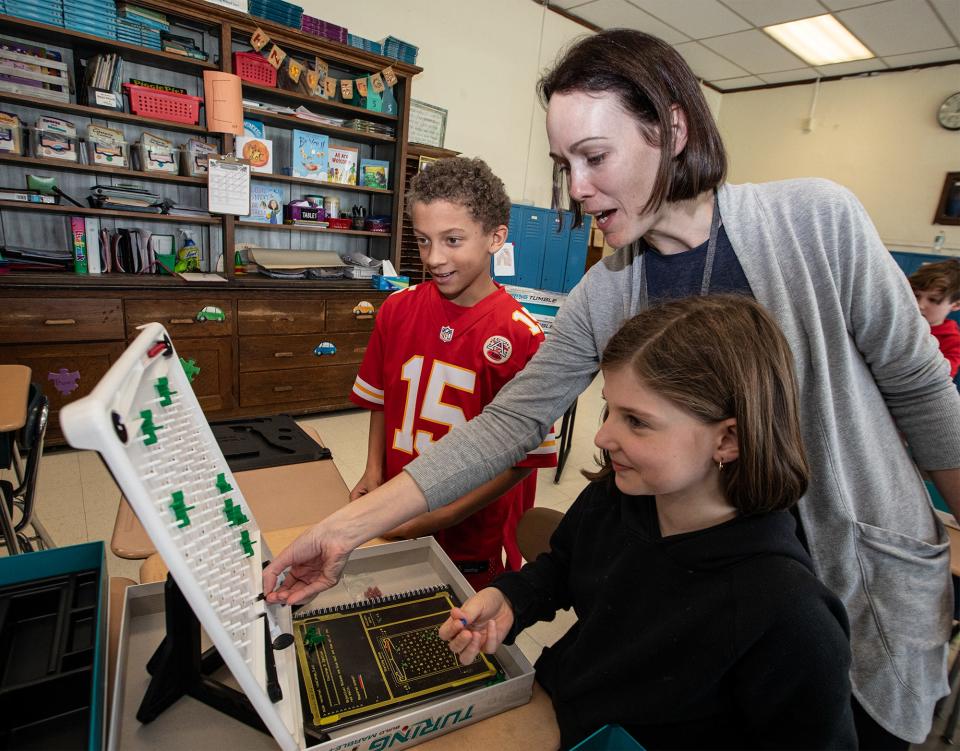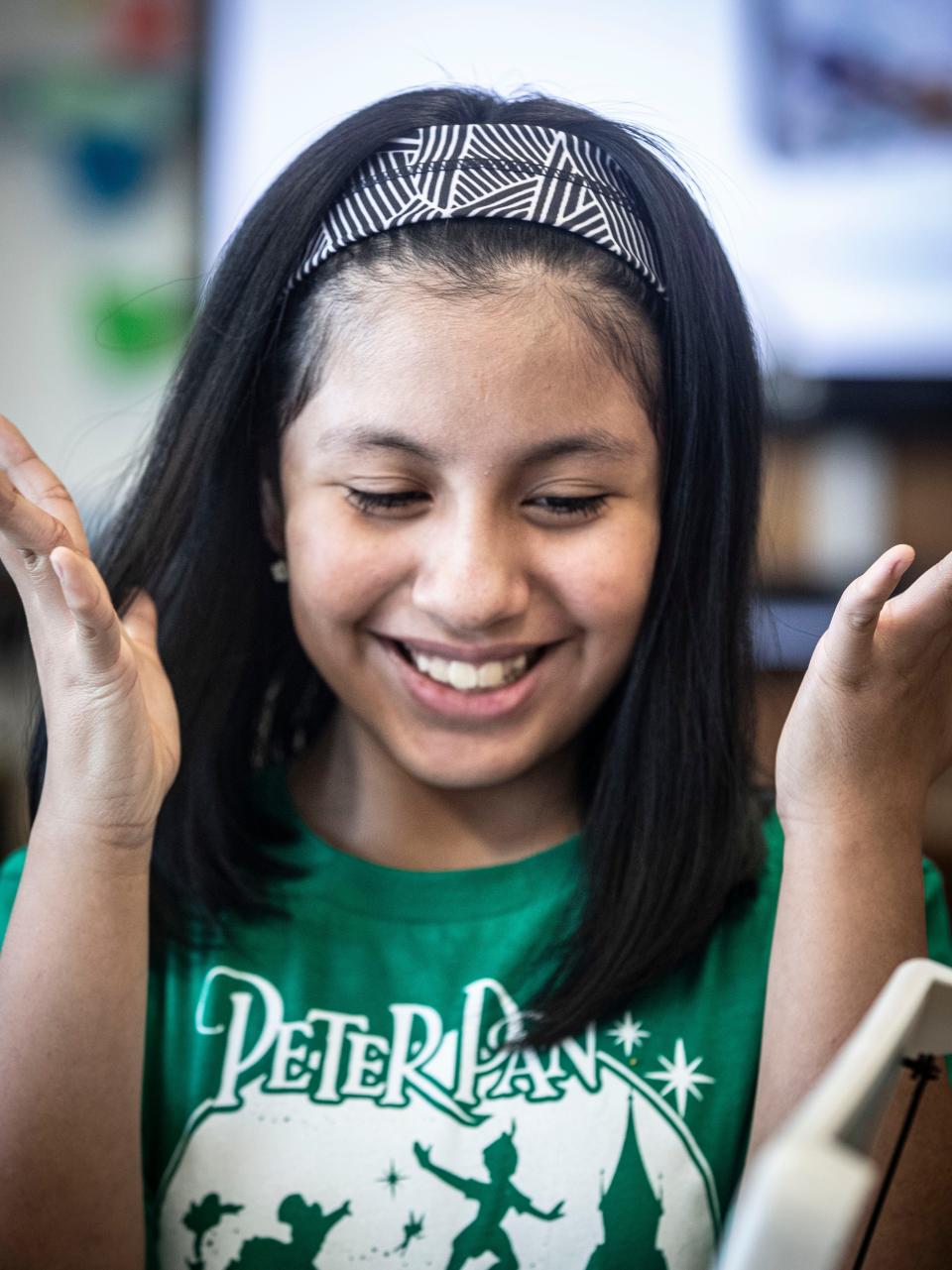Westchester fifth graders learn about computers through this fun marble game
A school year is 180 days, with no two days and no two schools exactly alike. The students differ, the teachers differ, school cultures differ. Here, our photographers find what makes our school days anything but ordinary, the people and programs and events that make a difference, school day in and school day out.
Check back to lohud.com for our lohud in our schools feature each Monday.
Students at the Washington Irving Intermediate School in Tarrytown, NY, are getting a hands-on lesson in learning about the internal operations of a computer through a fun, logic-based marble game.
As part of the computing component of the school’s STEAM (science, technology, engineering, arts and math) curriculum, fifth graders are using Turing Tumble, a game that replicates the input-process-output model of computing to solve challenges.

Fifth-grader Ben Luft reads the instruction book as he works at solving a challenge while playing Turing Tumble in class Jan. 22.
“For me it makes sense," Ben said. "Input, processing, and output are the main functions of what a computer has to do. I’d say that the game makes it simpler to understand how a computer works and how the input affects the output and how it processes it in the middle.”

Meghan Hak, a STEAM teacher, helps fifth-graders Jordan Young and Olivia Rose set up their Turing Tumble board as they try to solve a challenge. Hak says the game is designed to foster critical thinking skills through hands-on learning.
“The game is fun and engaging and provides a visual of what they can’t see happening inside a computer,” she said.

Abby Hierco waits to see if she has solved a challenge while playing Turing Tumble.
The goal of the game is to have marbles travel from the top of the game board to the bottom and land at the bottom in a specific order. Students provide the input by selecting the direction of the switches on the game board that determine the path of the marbles. The switches represent the computer processor, or the billions of switches found on a computer chip, and output is represented by the solution to the challenge.

Lianna Maito reacts after solving a challenge while playing Turing Tumble in class.
This article originally appeared on Rockland/Westchester Journal News: Tarrytown STEAM curriculum includes fun, games, hands-on learning

